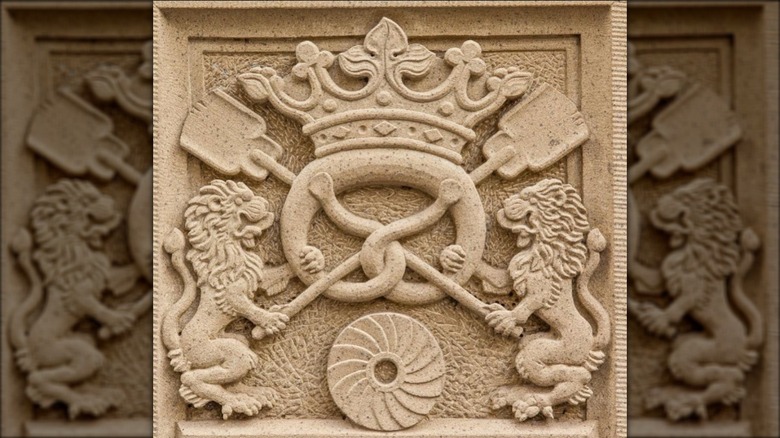The Symbolic Reason Pretzels Are Eaten During Lent Goes Back To The Middle Ages
In an unexpected twist (pardon the pun), one of the nation's most common grab-n-go bar snacks is rooted in religious symbolism. Pretzels, the everyday staple plenty of us have tucked away in our pantries, were created by a seventh-century monk living in what is now either Northern Italy or Southern France. While specific details vary, the gist of the story is that the religious instructor, who had a playful nature, twisted leftover bread into what's now known the world over as a pretzel shape. The unique configuration of his creation was no accident. Instead, the monk's design was meant to mimic a person's arms crossed in prayer, making the salty snack a suitable reward for young students who could successfully recite their prayers.
That's all well and good, but what does it have to do with Lent? Turns out, not much. At least, not until centuries later when the simple bread became a go-to snack for faithful Christians doing their best to abide by the church's edict on fasting during the Lenten season, which forbade the consumption of meat, dairy, and eggs. Pretzels — made only from flour, salt, and water — provided sustenance within the confines of the church's teachings. We're guessing the widely known story about the inspiration for the shape of the snack didn't hurt its appeal either.
What's in a name?
But why "pretzel?" The name stems from the Latin word "pretiola," which means "little rewards." Or, maybe not. Another theory of origin suggests the rewarding snack was originally named "bracellae," Latin for "little arms." While it doesn't play into the name game, some people believe the three holes formed by the twisted dough symbolize the Holy Trinity. Regardless of its genesis, one curveball theory connects pretzels to the Vatican a century before the kindly monk began distributing them for good work.
By the 1400s, the tradition of the twisty bread had spread into Germany, where bracellae became bretzel, then pretzel. While Germans viewed the pretzel as a general symbol of longevity and prosperity, the Lenten connection carried over in the form of a traditional Good Friday dinner. Following a day of fasting, Germans sat down to a meal of pretzels with hard-boiled eggs tucked into the "arms" of the bread, a symbol of renewal in celebration of the Easter season.
A century later, the oft-cited connection between monasteries and pretzels came full circle when Austrian monks thwarted an attack by Ottoman Turks intent on taking Vienna. The monks, who were baking pretzels in the monastery basement, overheard the attacking soldiers tunneling their way into the city and alerted officials. To recognize their contribution to fending off the invasion, the Austrian emperor commissioned a coat of arms depicting two fierce lions holding a crowned pretzel.

